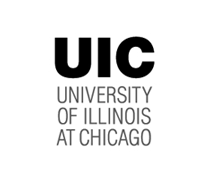Study of Inhaled Carbon Monoxide to Treat Idiopathic Pulmonary Fibrosis
| Status: | Completed |
|---|---|
| Conditions: | Pulmonary |
| Therapuetic Areas: | Pulmonary / Respiratory Diseases |
| Healthy: | No |
| Age Range: | 18 - 85 |
| Updated: | 5/3/2014 |
| Start Date: | July 2011 |
| End Date: | July 2014 |
| Contact: | Betsy Peters, BSN. RN |
| Email: | epeters2@partners.org |
| Phone: | 617-525-9331 |
Phase II Study of Inhaled CO for the Treatment of Idiopathic Pulmonary Fibrosis
The purpose of this study is to determine whether low concentration inhaled carbon monoxide
is effective in treating idiopathic pulmonary fibrosis.
is effective in treating idiopathic pulmonary fibrosis.
Idiopathic pulmonary fibrosis (IPF) is an interstitial lung disease characterized by
destruction of normal epithelial structure, proliferation of fibroblasts, and deposition of
connective-tissue matrix proteins. There are currently no effective therapies for IPF. Over
the past two decades, preclinical studies of inhaled low dose carbon monoxide (CO) have
shown that this biologically active diatomic gas possesses properties that would make it a
viable novel therapy for IPF. CO therapy has been well tolerated in Phase I and Phase II
human trials to date. This phase II study is designed to investigate whether IPF patients
show evidence of decreased peripheral blood levels of MMP7 and stability of secondary
indicators of disease progression after 3 months of inhaled therapy.
destruction of normal epithelial structure, proliferation of fibroblasts, and deposition of
connective-tissue matrix proteins. There are currently no effective therapies for IPF. Over
the past two decades, preclinical studies of inhaled low dose carbon monoxide (CO) have
shown that this biologically active diatomic gas possesses properties that would make it a
viable novel therapy for IPF. CO therapy has been well tolerated in Phase I and Phase II
human trials to date. This phase II study is designed to investigate whether IPF patients
show evidence of decreased peripheral blood levels of MMP7 and stability of secondary
indicators of disease progression after 3 months of inhaled therapy.
Inclusion Criteria:
- Adults above the age of 18 and equal to or below the age of 85
- Diagnosis of IPF by biopsy or
- ATS/ERS/ALAT Guidelines (Am J Respir Crit Care Med Vol 183. pp 788-824,2011)
- FVC greater than or equal to 50% predicted, greater than or equal to one month off
all medications prescribed for IPF
Exclusion Criteria:
- Evidence of active infection within the last month
- Significant obstructive respiratory defect
- Supplemental oxygen required to maintain an oxygen saturation over 88% at rest
- History of myocardial infarction within the last year, heart failure within the last
3 years or cardiac arrhythmia requiring drug therapy
- History of smoking within 4 weeks of screening
- Pregnancy or lactation
- Participation in another therapeutic clinical trial
We found this trial at
8
sites
University of Chicago One of the world's premier academic and research institutions, the University of...
Click here to add this to my saved trials
Brigham and Women's Hosp Boston’s Brigham and Women’s Hospital (BWH) is an international leader in...
Click here to add this to my saved trials
Columbia University In 1897, the university moved from Forty-ninth Street and Madison Avenue, where it...
Click here to add this to my saved trials
533 Parnassus Ave
San Francisco, California 94122
San Francisco, California 94122
(415) 476-9000

University of California - San Francisco The leading university exclusively focused on health, UC San...
Click here to add this to my saved trials
Univ of Washington Founded in 1861 by a private gift of 10 acres in what...
Click here to add this to my saved trials
University of Michigan The University of Michigan was founded in 1817 as one of the...
Click here to add this to my saved trials
University of Illinois at Chicago A major research university in the heart of one of...
Click here to add this to my saved trials
Click here to add this to my saved trials





